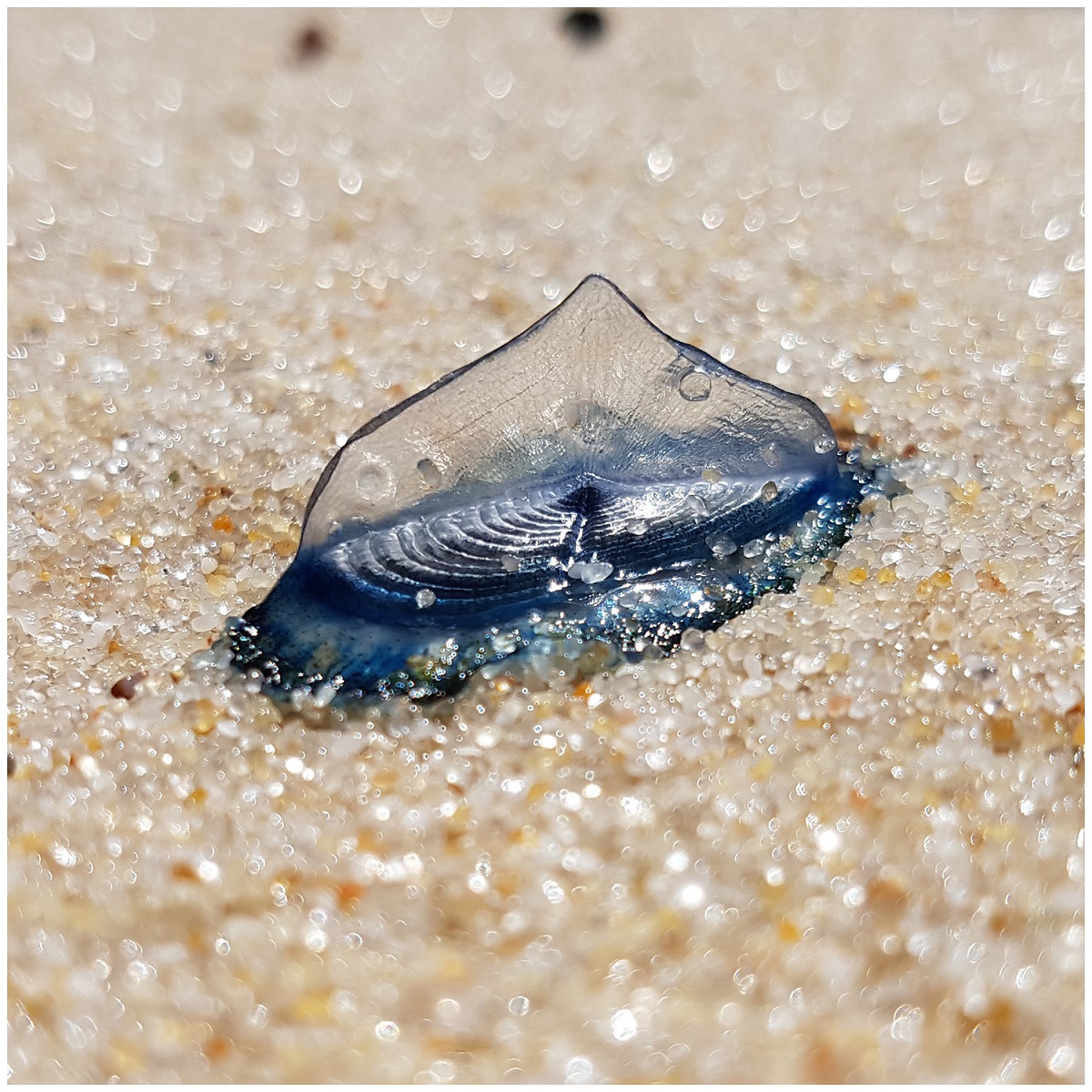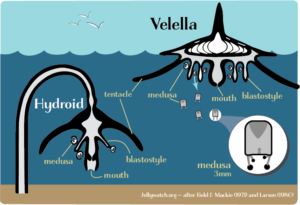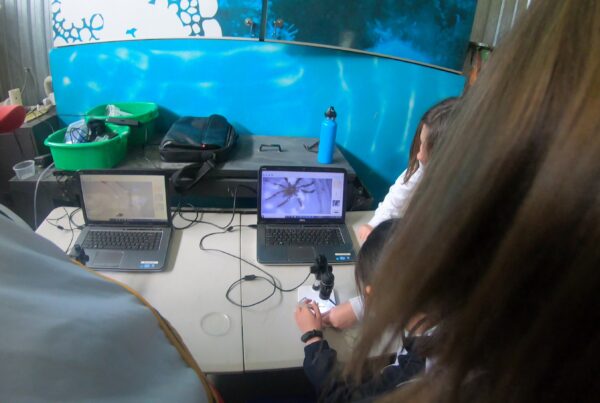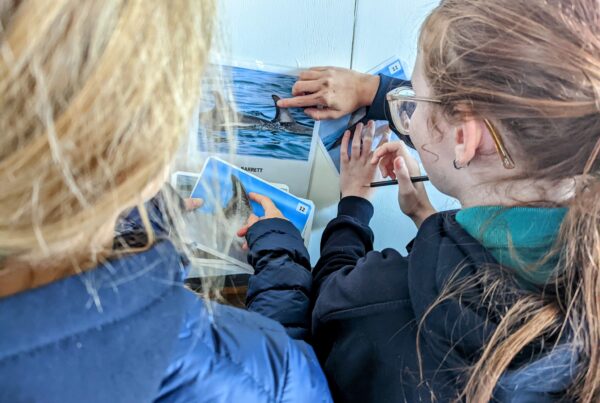The common name for this animal is a By-the-wind sailor (Velella velella). As the name suggests they sail on the wind, taken wherever the wind blows them. They live in vast numbers on the ocean away from land and we only see them when they are blown onto a beach.
The By-the-wind sailor is often mistaken for a sea jelly and while it has tentacles and stinging cells like a sea jelly, it lacks the large pulsating bell which propels a sea jelly. The By-the-wind sailor can be distinguished by its transparent triangular sail sitting above a flat oval float. The float has many gas-filled chambers which ensure that the By-the-wind sailor sits on the surface with the sail extended skyward to catch the breeze. The float and sail are rigid, made of chitin, the same material we find in the exoskeletons of crabs and insects.
The sail is orientated at an angle to centre line of the float, some angled to the right, others to the left. This ensures that they will not all be blown in the same direction. When you find them on the beach, they will all have the same sail orientation because they have all been blown in the same direction.
The By-the-wind sailor is not one animal but a colony of many animals called hydroids which live together below the float. The colony is a cluster of polyps, sea anemone-like creatures, that play different roles within the colony. Some use their tentacles to catch food, others use them to defend the colony while other polyps are responsible for reproduction. Interestingly, the polyps of each By-the-wind sailor are either all male or all female.
The By-the-wind sailor is a carnivore, its short tentacles gathering food from the very top layer of the ocean. Zooplankton, fish larvae, and other surface-dwelling creatures are its main source of food. It also has algae living in its tissue that use the sun and photosynthesis to produce food which the by-the-wind sailor can use.
Reproduction starts with tiny bell-shaped structures called medusa growing on the surface of the reproductive polyps. Thousands of medusae break off, mature over a period of a few weeks, and produce either sperm or eggs depending on the gender of their parent. The sperm and eggs combine, and the resulting larvae grow into By-the-wind sailor.
In Victoria, we generally only see a few By-the-wind sailors on a beach at a time, but mass strandings do occur. On the west coast of NZ in 2006 after 2 weeks of gale force onshore winds, a mass stranding was observed along a 6 km rocky beach. It was estimated that there were over 100 million by-the-wind sailors washed ashore
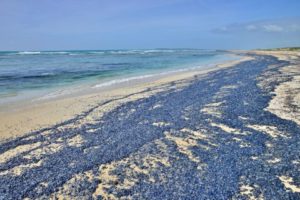
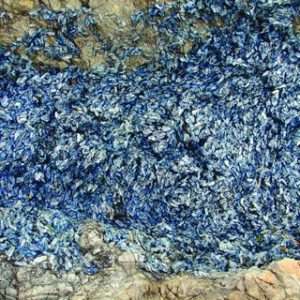 By-the-wind sailors washed up along the shoreline
By-the-wind sailors washed up along the shoreline
Take a closer look as the by-the-wind sailor floats along.
If you would like to learn more about the huge diversity of life that can be found along our coasts and shorelines please contact Education Director Mandy Robertson on education@dolphinresearch.org.au

